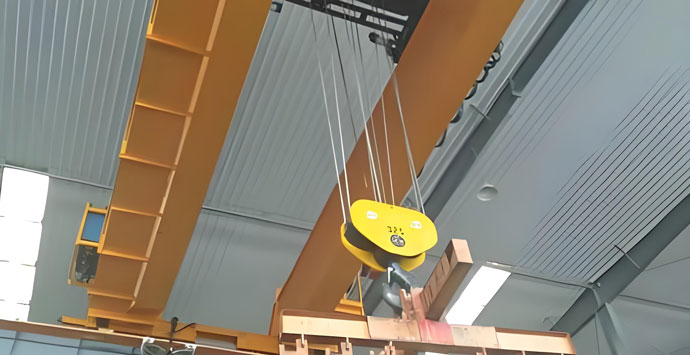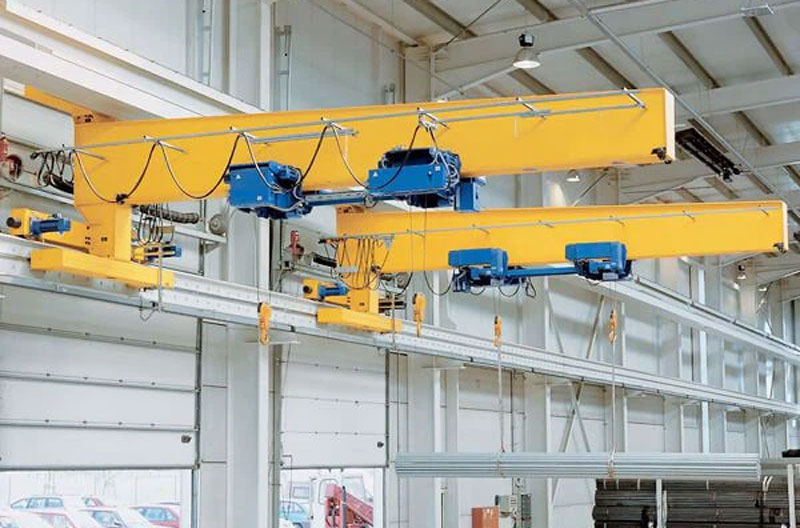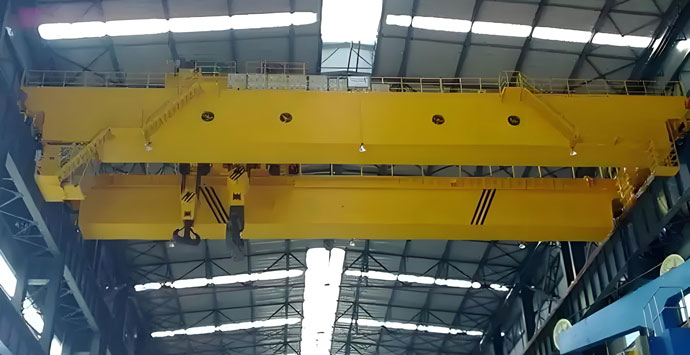Vinç kancası aşırı yük koruması
2025-08-21
Ağır kaldırma dünyasında, where colossal weights are maneuvered with precision, safety is not just a priority—it is an absolute necessity. At the heart of this safety paradigm lies a critical technological safeguard: Crane Hook Overload Protection. This system is the first and most crucial line of defense against one of the most dangerous occurrences in material handling: aşırı yükleme.
What is Overload Protection?
Crane hook overload protection is an integrated system designed to monitor the load being lifted by a crane and prevent the crane from operating beyond its rated capacity. Its primary function is to sense when a load approaches or exceeds the crane’s safe working load (Swl) or rated capacity and to initiate a series of actions to stop the lift, thereby averting potential disaster.

Why is it So Crucial? The Consequences of Overloading
The importance of overload protection cannot be overstated. Overloading a crane has severe, often catastrophic, consequences:
- 1. Structural Failure: The most immediate danger is the structural failure of the crane itself. This can include the deformation or collapse of the boom, the failure of wire ropes or hoist lines, or damage to the hook block. Such failures often lead to the load being dropped.
- 2. Crane Collapse: Aşırı durumlarda, overloading can cause the entire crane to tip over, especially in mobile and crawler cranes. This poses an immense risk to both personnel on the ground and surrounding infrastructure.
- 3. Equipment Damage: Even if a catastrophic failure doesn’t occur, consistently lifting loads near or beyond the limit causes excessive wear and tear on mechanical components, electrical systems, and hydraulic parts, leading to costly repairs and downtime.
- 4. Personnel Injury and Fatality: A dropped load or collapsing crane inevitably leads to serious injuries or fatalities for nearby workers.
- 5. Project Delays and Financial Loss: The aftermath of an overload incident involves investigation, onarımlar, potential regulatory fines, and significant project delays, all of which translate into substantial financial losses.

How Does Overload Protection Work? Key System Types
Modern overload protection systems use a combination of sensors, processors, and control mechanisms. The most common types are:
-
1. Load Moment Indicator (LMI) / Rated Capacity Indicator (RCI): This is the most comprehensive and common system, especially on mobile and telescopic cranes.
- Sensörler: It uses a series of sensors including:
- Load Cells: Placed in the hoist line or between the rope drum and the boom tip, they directly measure the weight of the load.
- Pressure Transducers: In hydraulic cranes, these measure the pressure in the hoisting cylinders, which correlates to the load weight.
- Angle Sensors: Measure the boom angle.
- Length Sensors: Measure the boom extension (for telescopic booms).
- Radius Sensors: Calculate the horizontal distance from the crane’s center of rotation to the hook.
- Processor: A central computer (the LMI unit) takes data from all these sensors. Using built-in load charts for that specific crane, it calculates the actual load moment (load x radius) and compares it to the safe capacity for the current configuration.
- Aksiyon: If the load reaches a predefined percentage of the capacity (Örn., 90%), it will trigger a pre-warning (Örn., a flashing light and buzzer). If it reaches 100% veya daha yüksek, the system will typically cut out the crane’s hazardous functions—automatically stopping the hoist-up motion and often only allowing the operator to lower the load or reduce the radius.
-
2. Mechanical Overload Limiters: These are older, purely mechanical systems but are still found on some equipment. They work on a spring-loaded or friction clutch principle. When the load exceeds a set limit, the mechanism physically disengages the drivetrain, preventing further hoisting. While robust, they are less precise than electronic LMIs and are usually set to a single capacity, not accounting for boom angle or radius.

Key Components of an Electronic System
- 1. Display Unit in the Cab: Shows the operator real-time information: yük ağırlığı, percentage of capacity, radius, boom angle, and boom length.
- 2. Audible and Visual Alarms: Provide clear warnings to the operator.
- 3. Control System Interlock: The critical component that physically interrupts the electrical circuit to the hoist control, enforcing the cut-out.
The Human Factor: It’s a Safety Aid, Not a Replacement
A vital principle to remember is that an overload protection system is an aid, not a substitute for competent operation and judgment. Operators must:
- 1. Be fully trained on the specific LMI system of their crane.
- 2. Understand that the system has limitations (Örn., it may not account for dynamic forces like wind, swinging loads, or side-loading).
- 3. Perform pre-operational checks to ensure the system is calibrated and functional.
- 4. Never intentionally bypass or tamper with the system.

Future Trends
Overload protection technology continues to evolve. Future systems are integrating more data, such as real-time wind speed monitoring, and using IoT (Nesnelerin İnterneti) connectivity to transmit load data and incident reports to fleet managers for predictive maintenance and enhanced safety oversight.
Crane hook overload protection is a non-negotiable element of modern industrial and construction safety. By providing a critical feedback loop between the crane’s capability and the operator’s actions, it prevents the deadly and costly mistake of overloading. Investing in reliable, well-maintained, and correctly used overload protection systems is an investment in human life, equipment longevity, and operational excellence.





Son Yorumlar